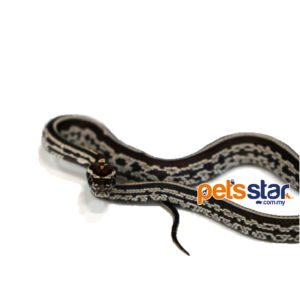
Tessera corn snakes make good pets. That being said, this morph is much rarer than many other corn snake varieties.
Size: 120-180cm (48-72 inches)
Life span : 13-15 years (proper care)
Temperature : 28ºC to 30ºC (room temperature)
Humidity : 40 - 50%
Dietary Requirements: Carnivorous

Country of Origin: America
– (now captive local breed)
Size: 120-180cm (48-72 inches)
Life span : 13-15 years (proper care)
Temperature : 28ºC to 30ºC (room temperature)
Humidity : 40 – 50%
Dietary Requirements: Carnivorous
Amel Corn Snake are low-key snakes that allow people to handle them and are generally docile. But when they feel threatened, especially in the wild, they may vibrate their tails as a defense mechanism, similarly to rattlesnakes.
Most snakes, corn and rat snakes are unrivaled escape artists. They will push at the lid with their noses looking for weaknesses and tiny openings, so the fit of the lid is very important.
The enclosure of corn snake amel must be secure to prevent them escaping and free from hazards. Good ventilation is essential to prevent the build up of harmful bacteria and it should be made from a solid material that is easy to clean and holds heat.
A corn snake needs a vivarium which allows it to fully stretch out. Allow *at least a third of the snake’s length for the width and height.*
*Example*: a 150 cm long corn snake will need a minimum 150 cm long, 50 cm wide and 50 cm deep vivarium.
A hatchling corn snake *may become stressed in a large vivarium*, which is linked to predator avoidance. Therefore, the snake *may be housed in a small vivarium and moved up sizes as it grows*
*Water Bowl*
You might not see your snake drinking very often, as they tend to be secretive animals. But you should make sure it has the option to drink anytime it wants. Choose a water bowl that is appropriately sized for your snake. Snakes may soak in their water bowls, especially when they are going into a shed cycle. So the bowl should be large enough for them.
Humidity factor: If your pet snake soaks in the bowl a lot, it may be a sign that the relative humidity is too low inside the cage.
1. Newspaper📰 (or tissue paper) utilitarian choice since it is very easy to clean up
2. Aspen shavings
1. Pine or cedar shavings( aromatic oils can cause irritation and respiratory issues)
2. Sand
3. Soil
4. Corncob
Snakes are cold-blooded (ectothermic). They depend on their living environment for warmth when a snake gets too cold, this will adversely affect its health and eventually result in death. The enclosure positioning the heat source at one end of the vivarium while leaving the opposite end cool so that the snake can move around to regulate its temperature.
Maintaining your corn snake’s home at the correct temperature is vital
Keep it at an ambient temperature of 26.5 to 30 C.
Humidity is essential to keep your snake’s respiratory system healthy and for a healthy skin shedding the humidity inside the vivarium, which should be around 40 to 50%. If it is too high, your vivarium will need more ventilation.
Hatchling corn snakes start on one baby mouse, called a ‘pinky’, every 5 to 6 days and move up sizes as they grow; up to one adult mouse every 7 to 14 days
Regular weighing is important to ensure that your snake does not become underweight or obese.*Feed outside of the enclosure to reduce the chance of the snake accidentally swallowing substrate. Offer food using *tongs* in a shallow.
Once the snake has swallowed the prey, gently place the open box back in the enclosure and let the snake come out in its own time. *Wait 48 hours after feeding before handling your snake to avoid it regurgitating up its food.*
Reptiles have to regularly shed their skin and snakes shed in one complete piece. There is no fixed frequency as to how often this will happen but it will be more frequent when the snake is young and growing.
The snake may hide away for a period of time and use the humid hide if you have provided one. Then it will rub its body against objects in the vivarium to remove the old skin, which should come away easily
If the snake has not shed completely, try bathing it in slightly warm water but do not try to pull it off as you can damage the new skin underneath.
Corn snakes can become used to regular handling. The snake can be gently scooped up with one hand underneath the animal near the head and the other end near to the tail, supporting the whole animal. Or use https://petsstar.com.my/product/getyourpetright-snake-hook/
Never grab the snake suddenly as this can cause stress which can lead the snake to struggle or bite. When a snake feels threatened it may pull its head back so the neck appears as an ‘S’ shape when viewed from above. If your snake does this it is better to leave it alone until another time. The snake should not be taken from the enclosure for so long that its core temperature drops. Around 10 to 15 minutes at a time is a safe period for this, depending on the room temperature. Keep other pets separate, regardless of how trustworthy they might have been in the past.
🚫 Avoid handling around shedding as it may behave defensively. Do not handle your corn snake after handling prey items as the snake may smell food and try to bite.
Wash your hands well first. Feeding the snake outside of the vivarium also helps, otherwise it will learn to expect food whenever the vivarium is opened.